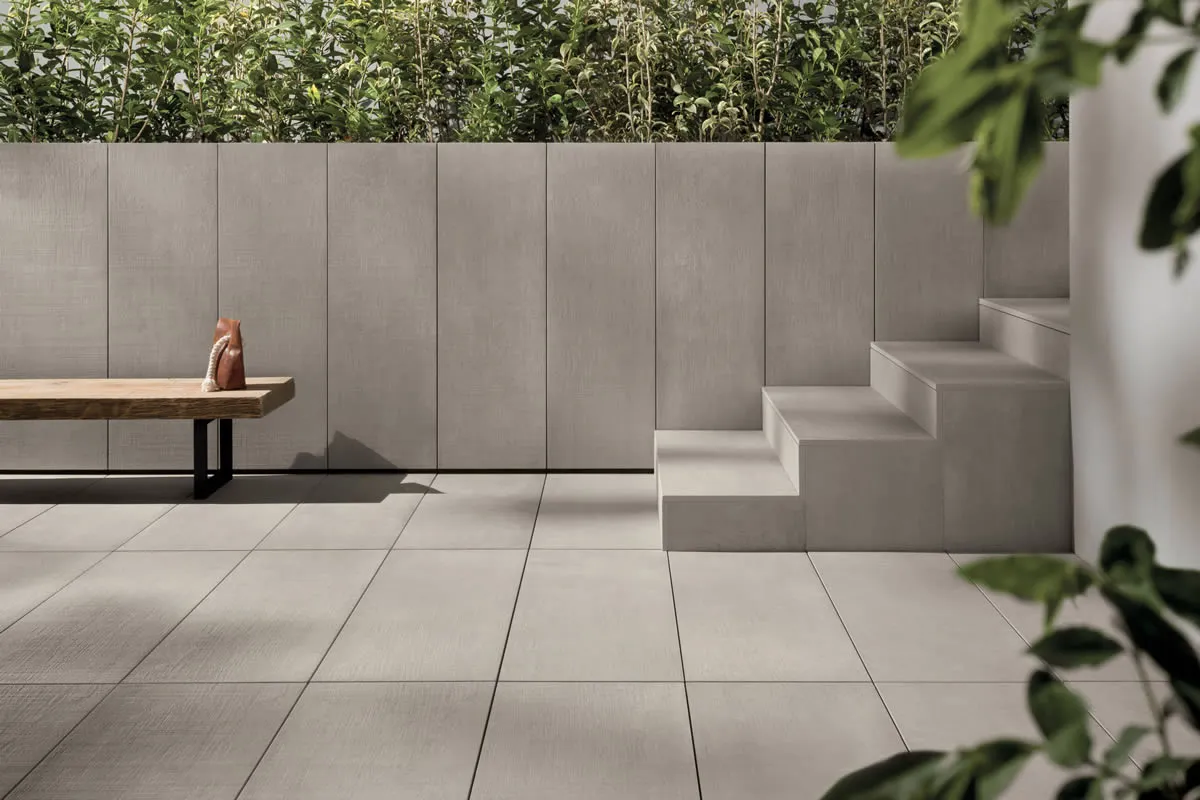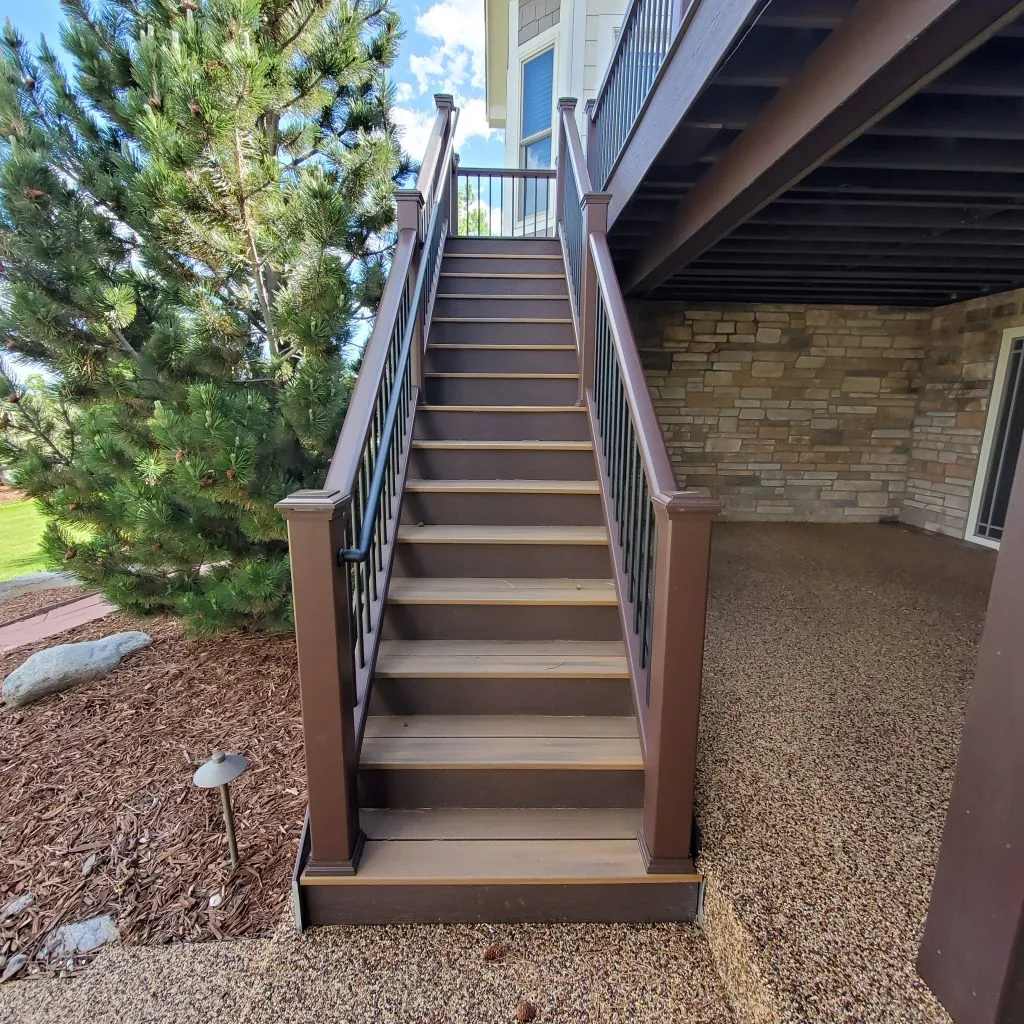Introduction
Outdoor staircase tiles are a great way to add a touch of style and durability to your outdoor spaces. They're available in a wide range of colors, patterns, and materials that can be used to create an elegant look for your home's entryway or backyard patio.

The benefits of using outdoor staircase tiles include:
Durability - These tiles are designed specifically for outdoors so they won't crack or chip like traditional ceramic tile floors would when exposed to harsh weather conditions such as rain or snow. This makes them ideal for areas where there is heavy foot traffic such as staircases leading up from the driveway into your garage or front door!
Variety - There are many different styles available including mosaic designs (which mimic natural stone), geometric patterns that resemble wood planks with nails sticking out of them (a popular choice among those who want something unique), etc... You'll find something perfect no matter what kind of design aesthetic fits best within your home decorating scheme!
Materials
There are many materials used in outdoor staircase tiles, each with its own pros and cons. Here are some of the most common materials:
1. Wood
This material is durable and lasts a long time, but water can damage it. If you live in an area prone to heavy rainfall or snowfall, this might not be your best option.
2. Concrete
This material is durable and cheap to install because it requires no maintenance; however, it can crack over time if exposed to extreme weather conditions such as high heat or cold temperatures (i.e., freezing).
3. Slate
Slate has been used for centuries because of its durability against harsh weather conditions like rain and snow--it even looks good when worn down! However, slate tends not to hold up well under constant foot traffic so if you're planning on using your new staircase as an entryway into your home then this might not be ideal either unless there's something blocking off access from people who don't live there yet like furniture or plants so they don't walk right through without noticing anything different about their surroundings
Designs
When it comes to outdoor staircases, there are many different designs available. You'll want to choose the right one for your space and lifestyle.
- Is it going in a high-traffic area? If so, you may want something that's durable enough to withstand constant foot traffic--like our polyethylene tiles. These are also great if you have kids or pets running up and down the stairs all day long!
- Do you plan on using them as an entryway into your home? If yes, then consider using glass mosaic tiles instead of other materials like concrete or brick because they'll be easier on the eyes when guests enter through this area of the house (and make them feel welcome).
- Do you want something stylish yet functional? Consider using stone slabs instead of traditional concrete blocks because they add style without taking away from functionality; plus they're easy enough for anyone who wants their own DIY project done fast without hiring someone else.
Installation
Step 1: Prepare the surface
Before you begin, make sure that your outdoor staircase is free of debris and dirt. You may also want to use a pressure washer if there are any stains or marks on the concrete surface.
Step 2: Measure your tiles
Measure the length of each tile so that it matches up evenly with its neighboring pieces when laid out on top of each other. This will ensure that your staircase looks seamless when completed!
Step 3: Install the first row of tiles along the edge closest to the house or wall
Maintenance
Cleaning your outdoor staircase tiles is simple. You can use a soft cloth or sponge to wipe down the surface of the tile, but if you have stubborn stains, try using warm water and a mild detergent. Be sure to rinse off any soap residue after cleaning.
If you want to give your outdoor staircase tiles an extra shine, apply a protectant product like 303 Aerospace Protectant or Armor All Protectant (both available at most auto parts stores). If you're looking for ways to keep your outdoor staircase tiles looking good for years to come, here are some tips:
Don't use harsh chemicals on them--they'll damage the finish! Instead, opt for products that contain mild detergents such as dishwashing liquid or laundry detergent mixed with warm water; these will remove dirt without damaging the surface of your tiles while also helping prevent mold growth in humid climates where moisture may collect underneath them over time if left untreated
Cost
When it comes to the cost of outdoor staircase tiles, there are a few things you should know. First, the price will depend on what type of material you choose for your flooring and how many square feet you need.
For example, slate tiles can be quite expensive but will last longer than most other types of stone because they're harder to break or crack under pressure. On average, slate costs about $8 per square foot while limestone costs only $5 per square foot--but limestone has less resistance against weathering so it won't last as long as slate would in an outdoor setting (which means more frequent maintenance).
If you're looking for ways to save money on this project without skimping on quality or performance: consider using recycled materials like glass bottles or old car tires! You could even try making your own outdoor staircases out of wood planks if they're going inside rather than outside; this option may not be suitable for wetter climates but might work well elsewhere depending on how much moisture is present near where people walk up/downstairs every day."
Safety
When you are looking to transform your outdoor space, it is important to consider the safety of those who will be using the staircase. When choosing outdoor stair tiles, there are several factors that should be taken into account.
The material used in making the tiles should be durable and resistant to weathering so that they can withstand rain, snow, and other harsh conditions without cracking or breaking apart. They should also have slip-resistant surfaces so that people don't trip on them when walking up or down stairs in wet weather conditions such as rain or snow meltwater runoff from nearby roofs (which can cause slippery surfaces).
DIY vs Professional
If you're considering installing your own outdoor stairs, there are a few things to consider. First, the advantages and disadvantages of DIY installation vs professional installation.
The main advantage of doing it yourself is that you're able to save money by avoiding having to hire someone else to do the job for you. On the other hand, if something goes wrong with your project (which can happen), then it's up to you as an individual homeowner or DIYer--not some company--to fix it.
Additionally, if there are any issues with warranty coverage from the manufacturer or supplier after the installation has been completed by someone else (not including yourself), then those will need resolved between them rather than through direct communication with yourself as well as any other parties involved in making sure everything goes smoothly during construction/installation processes such as suppliers/manufacturers themselves who may offer warranties on certain materials used within their products' lifetime spans."
Conclusion
Outdoor staircase tiles are a great way to add style and durability to your outdoor space. They're easy to install and come in various styles, colors, and patterns. They're also very affordable compared with other types of flooring options for your porch or patio! Visit Adila Ceramic to locate the best stone flooring or outdoor step tiles. They would be happy to assist you and give your outdoor space a sumptuous feel with their distinctive selection of tile collections!





